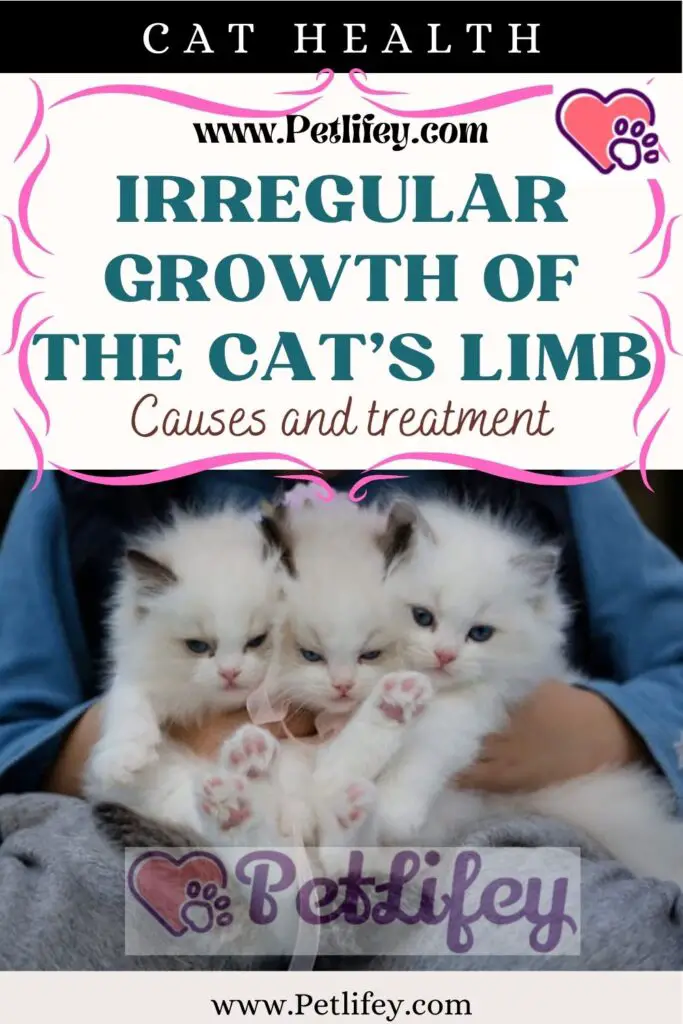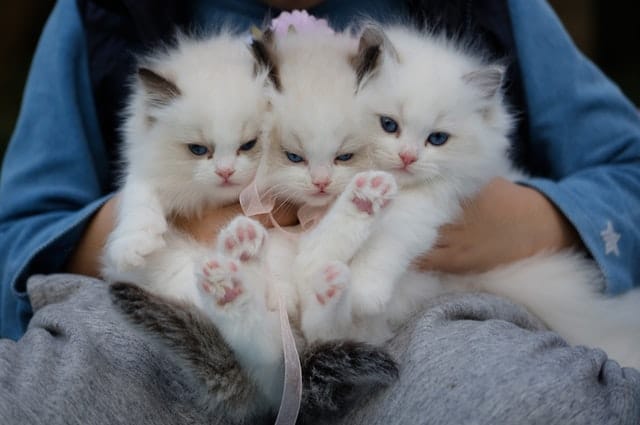
Why might a cat’s limb grow unevenly and what are the risks for our kitty? Everything you need to know about the problem.
When a cat limps or walks poorly it is likely that the problem is due to a malformed limb. Often it is one or more legs. The causes can be the most diverse, but it is necessary to notice in time to intervene before the problem can worsen definitively. Establishing the cause is a fundamental step in understanding the origin of the problem and also suggests the best and most effective way to deal with it. Our task will be to entrust our beloved cat in the hands of an expert who, through some specific tests, will be able to establish where the problem came from and how to deal with it.
Irregular growth of the cat’s limb: the triggering causes
Certainly a limb that does not grow in a healthy and proportionate way has a problem. Whether it is congenital or due to an occasional event, the risk that the limb may grow irregularly is quite high. Although the cat is known for its agility and its ability to run, jump down without getting hurt, sometimes the most exposed limbs, namely the paws, are damaged. But the cause could also be found in some very dangerous infectious diseases and, unfortunately, quite common among felines. So here are the main causes of the irregular growth of a cat’s limb.
External causes
Abscess, a blister following a bite, irregular migration of the heartworm to an artery in the paw, trauma injuries such as a fall and bone fracture. Problems due to nail removal or complications and infections following the operation itself. The main causes are also the dislocation of a joint, or when the bone comes out of the joint, or a wound involving the cartilage or a laceration of the leg.
Bone problems
Inflammation of the joints and various types of arthritis in cats: in the case of elderly cats, for example, the most frequent is osteoarthritis, due to the aging of the joints. Or Calicivirus is a common, flu-like viral infection that can cause momentary arthritis in cats. hip dysplasia in cats deserves a separate mention, a congenital disease to which particular breeds such as the Devon Rex, the Maine Coon, the Persian and the Norwegian Forest Cat are exposed.
Illnesses
Hemophilia is a problem that causes poor blood clotting, resulting in internal bleeding or blood leaking outside. With internal bleeding, blood can enter the joints. Let’s not forget Lyme disease : a bacterial infection due to the attack of ticks, which also involves inflammation of the joints. Pemphigus, a chronic autoimmune skin disease that presents with red dots and pustules on the infected part (often it is the area around the nails, fingers and fingertips).
Tumors
Bone cancer, possibly due to metastases to other nearby parts of the body.
Irregular growth of the cat’s limb: symptoms
How to notice if a cat has an irregularly growing limb? Most of the time just look at it carefully. The cat may be limping, although it is a very smart animal that does not show its real pain. Here are the details to note in the cat’s attitude and what to pay attention to:
- the cat tends not to rest its weight on one paw and keeps it off the ground,
- walks stiffly, as if afraid of harming himself,
- is unable or afraid of jumping an obstacle (it is the same fear of getting hurt that restrains it),
- exhaustion and little dynamism,
- swollen joints.
These are the most evident symptoms when a cat’s limb grows irregularly, but there are others that are more difficult to relate to the problem as side effects, as they are very generic such as: high fever, aggression in the cat, warmth of the swollen paw, hair loss, bleeding and infections with foul-smelling pus.
The owner’s task, therefore, is to note if there are signs of cuts or abrasions on the paw: we avoid moving the limb because it could make him feel further pain (and could consequently react also with violence). If we notice small wounds or the presence of residues of glass or other between the fingertips, we immediately proceed to the careful removal of them and treat the wounds with home remedies. We consult a veterinarian to prescribe a pain reliever, combined with absolute rest.
Irregular growth of the cat’s limb: how the vet will proceed
Given that each expert will be able to proceed according to the procedure he deems most appropriate, usually the routine tests to establish the cause of the irregular growth of the limb are the physical one of the cat and the evaluation of the medical history. This means that we will have to be precise and detailed in reconstructing the various steps: when we noticed the symptoms, what symptoms were and how they manifested and if in a sudden or gradual way. Furthermore, it will be necessary to provide the expert with information on his previous medical history, age, state of health etc.
Once these data have been received, the doctor can proceed with: an x-ray or ultrasound to evaluate the joints, to rule out tumors or fractures and blood tests to rule out diseases. The recommended treatment generally includes anti-inflammatories such as aspirin or ibuprofen, and of course absolute rest. For the treatment of abscesses, antibiotics will be useful (always under medical prescription), also useful for treating Lyme disease, and a disinfectant for minor wounds.
If the fracture is confirmed, you will certainly opt for the application of a cast or a brace that immobilizes the limb and prevents sudden movements. In the case of arthritis, the expert is likely to prescribe a treatment based on non-steroidal anti-inflammatory drugs to treat the inflammation and, in the worst cases, surgery with glucosamine, a type of natural cartilage to rebuild the limb. When a type of cancer causes the malformation, one of the options is also the amputation of the same, if compromised in an unavoidable way. Hemophilia is treated with periodic blood transfusions and vitamin K administration. In general, the best cure is always rest, in case of torn or injured muscles and ligaments.
Diseases that cause the limb to grow unevenly

Here is a short list of the diseases often responsible for the uneven growth of the cat’s limb.
- Osteochondromatosis: Rare disease characterized by multiple bony growths on the vertebrae and ribs. In older cats it could be caused by a feline leukemia virus infection.
- Osteomyelitis: inflammation of the cat’s bone tissue, due to a bacterial infection. It involves an insufficient blood supply to the bone, trauma, inflammation, and an infection of the bloodstream. It is treated with antibiotics.
- Nutritional Osteopathy: Eating disorders can be at the root of decreased bone mass, bone deformities and growths, fractures and tooth loss. An unbalanced diet, vitamin D deficiency, or excess vitamin A can cause these bone deformities.
- Secondary nutritional hyperparathyroidism: calcium deficiency in the cat, when it eats too much meat, high in phosphates and low in calcium.
- Hypervitaminosis A: when the cat’s diet includes an excess of vitamin A.






